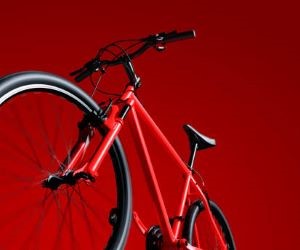Learn how to deal with punctures on long rides with prevention tips, repair techniques, and smart gear choices to keep rolling without stress.
HOW DO I DEAL WITH HEATWAVES WHILE CYCLING?
Heatwaves are no joke for cyclists. They strain your body, challenge your nutrition, and turn any ride into a battle of endurance. But with smart strategies—timing, gear, hydration, and pacing—you can ride strong and stay safe even in brutal temps. This guide walks you through everything you need to know.

Why heatwaves are dangerous for cyclists
When temperatures spike above 32°C (90°F), cycling performance suffers and the risk of heat-related illness rises. Your body struggles to cool itself, especially when the heat index climbs and airflow is limited—like on climbs or city rides. Heatwaves increase dehydration risk, reduce power output, and slow recovery.
How your body reacts to extreme heat
Cycling in hot weather forces your cardiovascular system to work double-time. Blood is diverted to the skin for cooling, which reduces supply to working muscles. Sweat loss accelerates, and if you don’t replace fluids and electrolytes fast enough, core temperature rises dangerously.
Dehydration can impair performance by 10–20%
Loss of sodium and potassium affects muscle function
Heat cramps, dizziness, and nausea are early red flags
Left unchecked, heat exhaustion can lead to heatstroke
Recovery from heat injury takes days—not hours
Recognizing heat stress early is crucial. The key is to ride smarter—not harder—when the sun turns savage.
Smart ride planning for hot weather
The best way to beat the heat is to avoid it—at least during peak hours. But if you're committed to training or racing through a heatwave, smart planning can protect your body and your ride. Here’s how to stack the odds in your favor before you even roll out.
Ride early, finish early
Start your ride before 7 AM if possible. The difference between 26°C and 36°C is huge—and early morning humidity is easier to manage than afternoon radiation. Finish before the sun peaks between 11 AM and 4 PM.
Use weather apps to track hourly temps and UV index
Plan shorter loops near home or refueling stops
Ride shaded routes: trails, forest roads, coastal paths
Postpone big efforts or intervals for cooler days
Be willing to shorten the ride—no ego rides in heatwaves
Gear up for the heat
The right gear can lower your core temperature significantly. Think light, breathable, and moisture-wicking. Avoid dark colors. Use cooling accessories like ice socks and ventilated helmets.
Lightweight jerseys with mesh panels
Sleeveless base layers to wick sweat
White or reflective helmet covers
Cooling towels or ice packs in jersey pockets
Gloves and caps made for summer use
You can’t control the sun—but you can create a microclimate that helps your body cope.
Hydration, cooling, and heat recovery
If you’re going to ride in a heatwave, hydration becomes your main job. That includes before, during, and after the ride. Electrolytes, cooling strategies, and smart recovery techniques all work together to keep you safe and strong.
Stay ahead of hydration loss
Drink 500–750 ml per hour on the bike, more if you sweat heavily. Include electrolytes with sodium, potassium, and magnesium to replace what’s lost in sweat. Alternate between water and mix if needed.
Start well-hydrated—check urine color before riding
Use insulated bottles to keep fluids cooler
Consider hydration packs for long rides
Stop to refill often—don’t ration water
Freeze a bottle the night before as a “heat battery”
Mid-ride cooling techniques
Heat affects performance long before you feel symptoms. Use proactive cooling strategies:
Douse your jersey or helmet vents with cold water
Stop in shade every 60–90 minutes
Soak a bandana or cooling cloth and wear it around your neck
Ride slower in full sun to reduce heat load
Avoid caffeine during peak heat hours—it’s a mild diuretic
Post-ride recovery in heat
Finish strong, then cool down deliberately. Don’t just flop on the couch. Strip sweaty clothes, hydrate immediately, and cool your core temperature.
Cold showers or baths help reduce inflammation
Rehydrate with fluids + electrolytes within 30 minutes
Include carbs and protein in your first recovery meal
Rest in an air-conditioned or shaded area post-ride
Watch for signs of heat illness up to 24 hours later
Riding in a heatwave isn’t about pushing limits—it’s about controlling the variables you can. With the right knowledge and discipline, you can still train, race, or commute safely, even when the mercury soars.
YOU MAY ALSO BE INTERESTED






